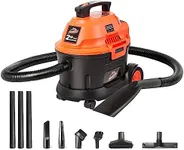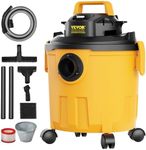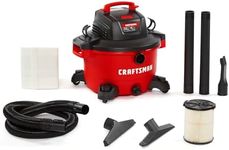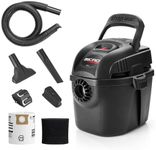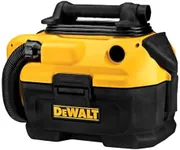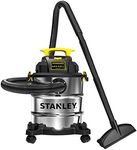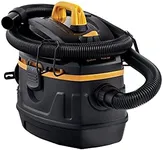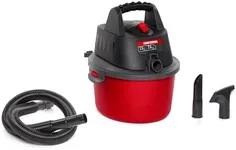Buying Guide for the Best Powerful Shop Vac
Choosing a powerful shop vac can make cleaning up heavy debris, liquids, and dust much easier, whether you're working in a garage, workshop, or on a job site. The right shop vac for you depends on the types of messes you expect to handle, the size of the area you'll be cleaning, and how portable you need the machine to be. Understanding the key specifications will help you match a shop vac to your needs and ensure you get the best performance for your tasks.Motor Power (Horsepower or Amps)Motor power tells you how strong the suction of the shop vac will be. It's usually measured in horsepower (HP) or amps. Higher numbers mean more suction, which is important for picking up heavy debris or wet messes. Light-duty shop vacs often have lower power, suitable for small jobs like cleaning cars or light dust. Medium-duty models are good for workshops and home renovations, while heavy-duty vacs with the highest power are best for construction sites or large, tough messes. Think about the toughest job you expect to tackle and choose a power level that matches.
Tank CapacityTank capacity is the size of the container that holds the debris and liquids you vacuum up. It's measured in gallons or liters. Smaller tanks are lighter and easier to move, but fill up quickly and need to be emptied more often. Medium tanks offer a balance between portability and capacity, while large tanks are best for big cleanups but can be heavy when full. If you often clean large areas or deal with big messes, a larger tank will save you time. For quick, small jobs, a smaller tank is more convenient.
Suction (Sealed Pressure or Airflow)Suction strength is sometimes listed as sealed pressure (inches of water lift) or airflow (CFM, or cubic feet per minute). Sealed pressure shows how well the vac can pick up heavy or wet items, while airflow measures how much air (and dust) it can move. Higher numbers in either mean better performance. If you need to pick up liquids or heavy debris, focus on sealed pressure. For fine dust or general cleaning, higher airflow is more important. Match the suction specs to the type of mess you expect most often.
Filter TypeThe filter keeps dust and debris from blowing back into the air. Some shop vacs have basic foam or cloth filters, while others use HEPA filters for trapping fine dust and allergens. If you work with fine dust (like drywall or sawdust) or have allergies, a better filter is important. For general use, a standard filter is usually enough. Consider what you'll be cleaning and choose a filter that matches your needs for air quality and maintenance.
Portability and Hose LengthPortability includes the weight of the shop vac, the presence of wheels, and the length of the hose and power cord. A longer hose and cord let you reach farther without moving the vac, which is helpful in large spaces. Lightweight and wheeled models are easier to move around, especially if you need to carry the vac up stairs or between locations. Think about where you'll use the vac most and how much you'll need to move it, then pick a model that fits your mobility needs.
Wet/Dry CapabilitySome shop vacs can handle both dry debris and liquids, while others are only for dry use. Wet/dry models are more versatile and can clean up spills, flooded areas, or even unclog sinks. If you expect to deal with both types of messes, make sure the vac is rated for wet/dry use. If you'll only be cleaning dry debris, a dry-only model may be simpler and lighter.
